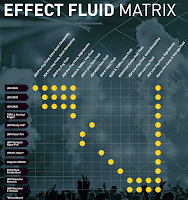Knowledge is power and now more than ever people are craving on-line learning. Martin lighting has as great amount of resources available to you now, and we are continuing to develop more content regularly.
The following details many ways you can learn more about Martin lighting products, gain insights and tips, and improve your knowledge of all things Martin.
Lighting Products
- Each lighting product produced by Martin includes a webpage with a product video, user manuals, safety manuals, and photometrics. Most of these items can be found on each product's webpage by scrolling down or clicking on the "Videos" or "Downloads" button on the right side of the page.
- Watch product videos to study the features and capabilities of each particular product.
- RTFM (Read The Freakin' Manual) to gain insights such as the DMX parameters, menu settings, and other options.
- Read the safety manual to learn how to change gobos, maintain the fixture, and follow proper safety procedures.
- Photometric charts are helpful to determine output at various distances and zoom ranges.
- Some products even have further downloads such as "Tech Notes" or "Hints and Tips."
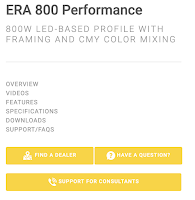
- At the heart of the P3 ecosystem lies the P3 software. This software offers an easy to use solution to map video onto Martin Creative LED and Lighting fixtures, including manipulation of the video such as scaling, rotating, mirroring and more.
- As with lighting products, the P3 product webpages contain videos and downloads as you scroll down or via the links on the right side of the page.
- In addition to the user manuals, there are many informative documents available.
- The P3-PC page even offers the software as a free download to install and use on any Windows machine.
- Many training videos for P3 software are available on this playlist: www.youtube.com/playlist?list=PLSdOAU7XmkQybSXE56KFE7ZOCIL2EbNKG
- The Martin Companion is the unified firmware upload tool compatible with all Martin lighting fixtures (MAC, ERA, ELP, RUSH & Exterior).
- When combining the hardware and software you can upload firmware to most Martin fixtures.
- Be sure to read the user manual and tech notes to ensure you fully understand the usage and capability of this software.
- The current versions of software are automatically downloaded as you start the software, but you can also always check the versions for all products here: www.martin.com/en-US/firmware
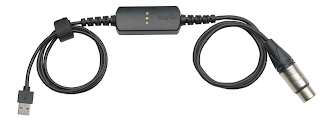
- Martin's JEM line of atmospheric products includes a wide range of products. Each product web page contains links to videos and downloads that provide essential information.
- All pages also include a link to a matrix that clearly defines which fluids can be used with each product. www.martin.com/en-US/site_elements/martin-atmospheric-effect-fluid-matrix
- A YouTube playlist has been created that further demonstrates the differences between the various fluids: www.youtube.com/playlist?list=PLX8PNXe5hN6MU6YPHx_iCFcDarcs0hP8G
- The Martin Professional YouTube channel has a nicely organized set of playlists featuring videos broken down into various categories. www.youtube.com/user/MartinProfessional/playlists
- To find the very latest videos posted by Martin, simply look here: www.youtube.com/user/MartinProfessional/feed?activity_view=1
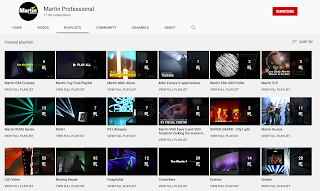
More Resources
- This very blog contains many articles written over the past few years with tips and tricks specific to Martin products.
- To your right in the sidebar, you can find links to the popular posts. -->
- Scroll to find a search box on the right and type in a product name to find specific information.
- The Harman Professional Solutions Insights Blog contains many postings related to Martin.
- Posts by Brad Schiller: pro.harman.com/insights/author/bschiller/
- Posts by Wouter Verlinden: pro.harman.com/insights/author/wverlinden/
- Posts by S. Kyle Davis (scroll for lighting): pro.harman.com/insights/author/kdavis/
- Posts by Lane Shannon: pro.harman.com/insights/author/lshannon/
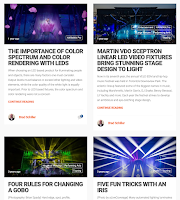
- Harman University
- Many on-line courses are available free of charge. traininglogin.harmanpro.com/login/
- Create a a free account and navigate in the course catalog to the Martin Lighting "On Demand" section.
- Each course contains a training video and quiz.

More Martin training and learning content is continuing to be developed. Stay tuned to the Martin website and this blog for further information as new resources are released.


